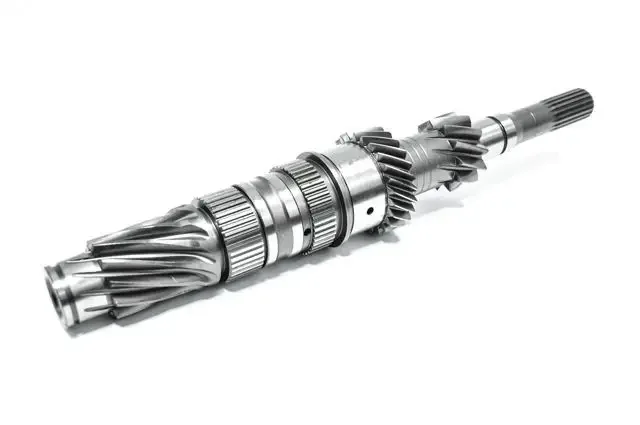CNC turning axis parts are widely used in various industries. These parts require precise machining and appropriate surface treatments to enhance their durability, corrosion resistance, and mechanical properties. The selection of a suitable surface treatment depends on factors such as material type, operating environment, and functional requirements. In this blog post, Vibo, as a high precision turning parts processing service provider, will share the common surface treatment methods of CNC turning axis parts.
CNC Turning Axis Parts Surface Treatment Methods
1. Passivation
Passivation is a chemical process used primarily for stainless steel components. It involves the removal of free iron from the surface, reducing the risk of oxidation and enhancing corrosion resistance. The process typically uses an acid-based solution, such as nitric or citric acid, to create a passive oxide layer that protects the material from environmental factors. Passivation is especially beneficial for medical and food-grade applications where cleanliness and resistance to contamination are crucial.
2. Polish
Polishing is a mechanical or chemical process used to enhance the smoothness and appearance of CNC-turned parts. It reduces surface roughness and improves wear resistance by eliminating microscopic irregularities. Mechanical polishing involves the use of abrasive materials, while chemical polishing dissolves a thin surface layer to achieve a smooth finish. Polished components are often used in aesthetic applications and precision instruments where minimal friction and superior appearance are required.
3. Heat-Disposing
Heat-disposing treatments, such as annealing, tempering, and case hardening, modify the mechanical properties of CNC-turned parts. These treatments help to relieve internal stresses, improve hardness, and enhance wear resistance. For example, case hardening forms a hardened outer layer while maintaining a ductile core, making it ideal for high-load applications. Proper heat treatment extends the lifespan of CNC components used in demanding industrial environments.
4. Anodizing
Anodizing is an electrochemical process mainly used for aluminum parts. It forms a thick, protective oxide layer that enhances corrosion resistance, wear resistance, and surface hardness. The anodized layer can be dyed in different colors, providing both functional and aesthetic benefits. Anodizing is widely used in aerospace, electronics, and consumer products where lightweight and corrosion-resistant materials are essential.
5. Sand Blasting
Sand blasting is a surface preparation technique that uses high-pressure abrasive particles to clean and texture CNC-turned parts. This process removes surface contaminants, oxides, and imperfections, providing a uniform matte or textured finish. It is often used as a pre-treatment for coatings, improving adhesion and durability. Sand-blasted components are common in industrial and mechanical applications where enhanced grip and surface uniformity are required.

6. Hot-Dip Galvanizing
Hot-dip galvanizing is a process in which steel or iron parts are immersed in molten zinc to create a protective coating. This treatment significantly enhances corrosion resistance, making it ideal for outdoor and high-humidity environments. The galvanized layer serves as a sacrificial coating, preventing the underlying metal from rusting. It is commonly used in infrastructure, construction, and heavy machinery applications.
7. Electroplating
Electroplating involves depositing a thin metal layer onto CNC-turned parts through an electrolytic process. Common plating materials include nickel, chrome, gold, and silver, each offering specific benefits such as corrosion resistance, electrical conductivity, and aesthetic enhancement. Electroplated components are widely used in automotive, electronics, and decorative applications where surface quality and protection are critical.
8. Black Oxide Coating
Black oxide coating is a chemical conversion process that creates a dark, protective layer on ferrous metals. This coating enhances corrosion resistance, reduces light reflection, and provides a decorative finish. Black oxide-treated parts are often used in military, automotive, and precision tooling applications due to their improved wear resistance and low-cost surface protection.
9. Rust Preventive Oil
Rust preventive oil is a temporary coating applied to CNC-turned parts to protect them from oxidation and corrosion during storage and transportation. It forms a thin film that repels moisture and contaminants, ensuring that the parts remain in optimal condition before final assembly or usage. This treatment is particularly useful for machined steel components that are exposed to variable environmental conditions.
Conclusion
Selecting the appropriate surface treatment for CNC turning axis parts is essential to enhance their performance, longevity, and functionality. Each method offers distinct advantages depending on the application, material type, and environmental factors. By understanding the benefits of different surface treatments, manufacturers can optimize their production processes and ensure the highest quality of CNC-turned components.
www.viboprecision.com
Vibo

